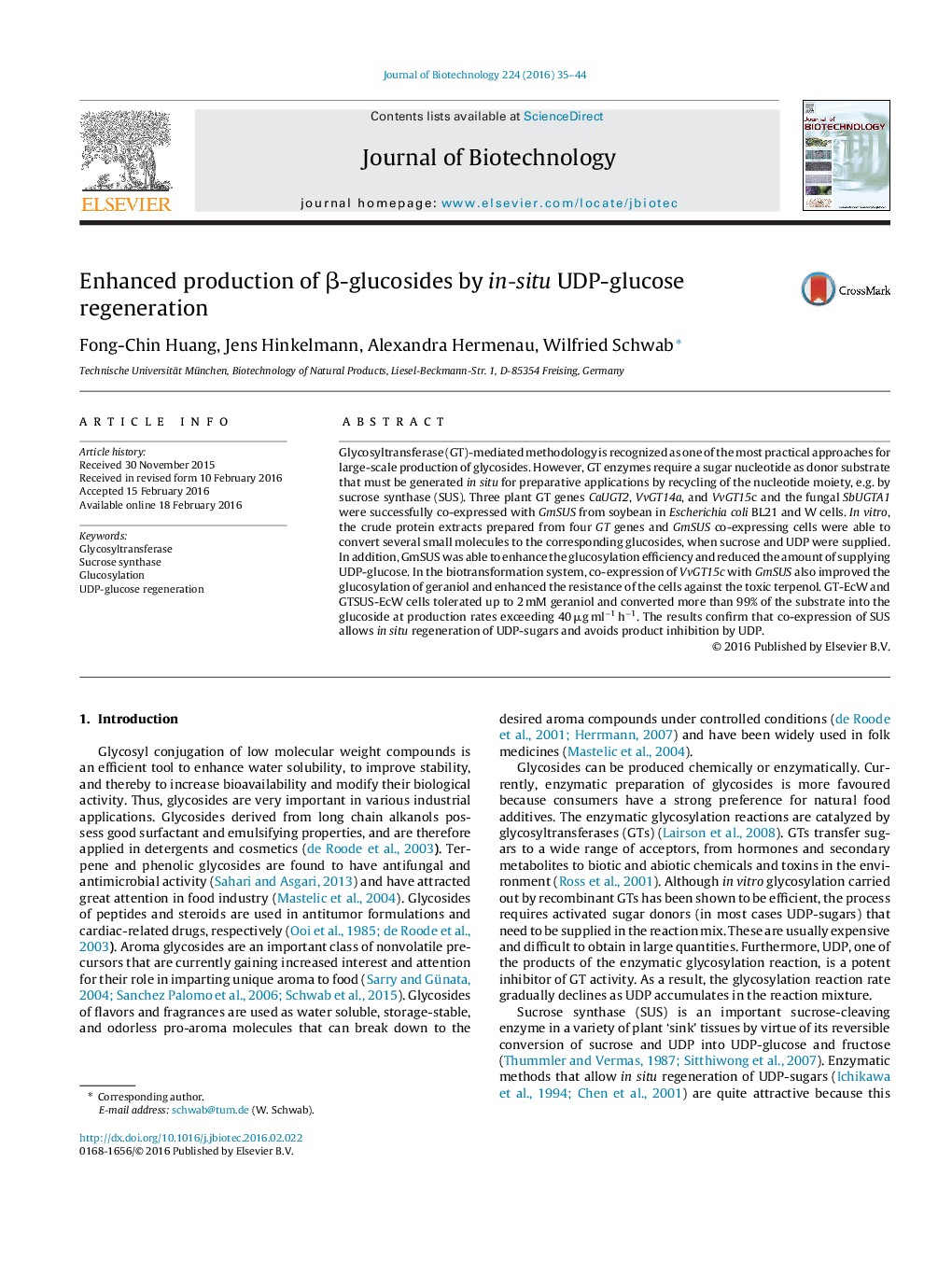| Article ID | Journal | Published Year | Pages | File Type |
|---|---|---|---|---|
| 22724 | Journal of Biotechnology | 2016 | 10 Pages |
•Glucosyltransferases were co-expressed with sucrose synthase (SUS) in E. coli cells.•SUS enhanced glucosylation efficiency and reduced the amount of required UDP-glucose.•SUS allows in situ regeneration of UDP-sugars and avoids product inhibition by UDP.
Glycosyltransferase (GT)-mediated methodology is recognized as one of the most practical approaches for large-scale production of glycosides. However, GT enzymes require a sugar nucleotide as donor substrate that must be generated in situ for preparative applications by recycling of the nucleotide moiety, e.g. by sucrose synthase (SUS). Three plant GT genes CaUGT2, VvGT14a, and VvGT15c and the fungal SbUGTA1 were successfully co-expressed with GmSUS from soybean in Escherichia coli BL21 and W cells. In vitro, the crude protein extracts prepared from four GT genes and GmSUS co-expressing cells were able to convert several small molecules to the corresponding glucosides, when sucrose and UDP were supplied. In addition, GmSUS was able to enhance the glucosylation efficiency and reduced the amount of supplying UDP-glucose. In the biotransformation system, co-expression of VvGT15c with GmSUS also improved the glucosylation of geraniol and enhanced the resistance of the cells against the toxic terpenol. GT-EcW and GTSUS-EcW cells tolerated up to 2 mM geraniol and converted more than 99% of the substrate into the glucoside at production rates exceeding 40 μg ml−1 h−1. The results confirm that co-expression of SUS allows in situ regeneration of UDP-sugars and avoids product inhibition by UDP.
